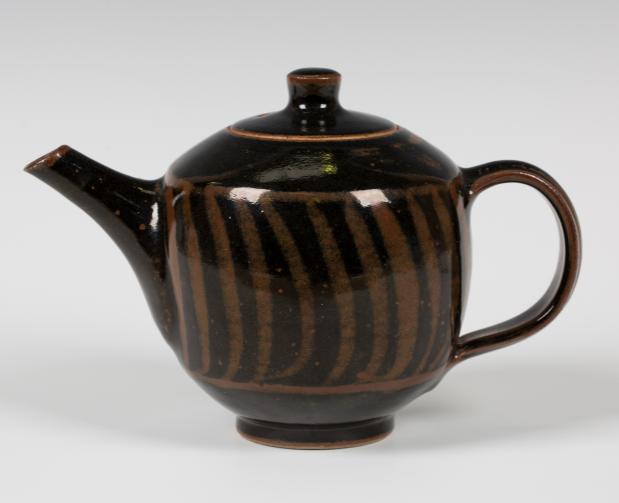Rediscovering the Magic of Tenmoku Glaze: A Journey into Leach Pottery’s Iconic Style
Hello fellow art enthusiasts! Today, we’re diving deep into the mesmerizing world of ceramics, specifically exploring the captivating beauty of Tenmoku glaze. This iconic glaze, with its rich history and stunning visual depth, has graced the pottery of the Leach Pottery studio for decades, becoming a hallmark of their signature style.
Joining us on this journey is Roelof Uys, the lead potter at Leach Pottery in St. Ives. He generously shares the secrets behind their iconic Tenmoku glaze, a recipe passed down through generations of ceramic artists and meticulously refined to achieve its characteristic depth and allure.
Unveiling the Allure of Tenmoku: More Than Just “Brown Pots”
Often misunderstood and unfairly labeled as simply “brown pots,” Tenmoku glaze holds a captivating charm that extends far beyond its surface. It’s a glaze that demands respect, demanding a keen eye to appreciate the subtle nuances and captivating variations that emerge during the firing process.
Imagine this: a glaze so responsive that it transforms from a deep, mysterious black to a warm, inviting rust, all within the same piece. This captivating interplay of colors dances across textured surfaces and sharp angles, creating a visual symphony that speaks volumes about the artistry of both the glaze and the potter.

Mastering the Art of Application: The Key to Tenmoku’s Magic
The true beauty of Tenmoku glaze lies not just in its composition, but also in its application. It’s a dance between potter and glaze, a delicate balance of technique and precision.
At Leach Pottery, the application process is a meticulous ritual. Each pot is carefully dipped into large buckets of glaze, ensuring an even coating that allows the Tenmoku to truly shine. The thickness of the glaze plays a crucial role in achieving the desired effect, and a hydrometer becomes an indispensable tool, ensuring the perfect ratio of glaze material to water.
But the artistry doesn’t stop there. Roelof Uys, a master of his craft, shares a technique where he strategically dips or wets specific areas of a piece before glazing. This intentional manipulation creates a captivating variation in glaze thickness, resulting in a piece that boasts a mesmerizing tapestry of textures and hues.
The Legacy of Warren MacKenzie: A Gift of Glaze and Inspiration
The Tenmoku glaze used at Leach Pottery today carries a legacy that extends far beyond the studio walls. It was a gift from the renowned ceramic artist, Warren MacKenzie, during his residency at Leach in 2013. This act of sharing not only enriched the studio’s repertoire but also served as a testament to the collaborative spirit that thrives within the ceramic arts community.
For Roelof Uys, who had just begun his tenure at Leach, this gift was more than just a recipe; it was an opportunity to connect with the studio’s rich heritage while infusing his contemporary vision into the iconic Leach Standard Ware range.

Recreating the Magic: The Tenmoku Glaze Recipe
Ready to embark on your own Tenmoku adventure? Here’s the recipe used at Leach Pottery, a testament to the enduring legacy of this captivating glaze:
Ingredients:
- Potash Feldspar: 48%
- Flint or Quartz*: 24%
- Whiting: 17%
- China Clay: 11%
- Red Iron Oxide: 9% (Adding only 1-2% iron will produce a celadon glaze)
Technical Notes:
- Clay Body: DSS from Doble’s with 0.25% added iron oxide.
- Water Ratio: Use about 6-7 liters of water per 10kg of glaze material.
- Straining: Strain the mixture through an 80-mesh sieve for a smooth consistency.
- Hydrometer Reading: Aim for a reading of 55 on a Baume 15°C scale.
- Firing: Fire the pots in a reducing atmosphere to cone 9 or 10 (Orton) over 11 to 13 hours.
A Note on Flint: Recently, Leach Pottery discovered that changes in the milling process for flint in the UK were causing their glazes to settle quickly. They remedied this by substituting flint with quartz in their recipes, ensuring a smoother and more consistent glaze.

Beyond the Recipe: Embracing the Spirit of Exploration
While the recipe provides a solid foundation, remember that the true magic of Tenmoku lies in experimentation. Don’t be afraid to play with the variables, to explore the interplay of clay body, application techniques, and firing temperatures. Each variation holds the potential to unlock new depths and reveal unexpected beauty within this timeless glaze.
For inspiration, look to the work of master potters like Warren MacKenzie (https://www.minnesotamodern.org/artists/warren-mackenzie/) and Bernard Leach (https://www.leachpottery.com/pages/bernard-leach), whose dedication to Tenmoku glaze helped elevate it to an art form. Their pieces serve as a testament to the endless possibilities that emerge when passion, skill, and a touch of Tenmoku magic collide.
So, go forth and explore the captivating world of Tenmoku glaze. Embrace the journey, experiment fearlessly, and discover the unique beauty that awaits within each fired piece. And who knows, you might just create your own signature style that becomes a legacy for future generations of ceramic artists. Happy potting!













Post Comment